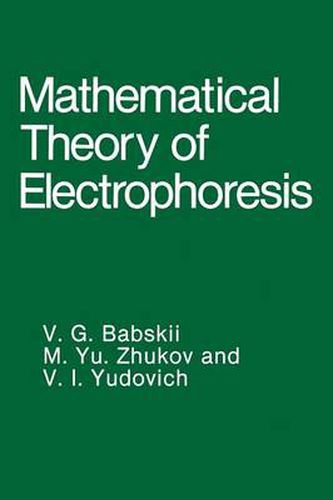Readings Newsletter
Become a Readings Member to make your shopping experience even easier.
Sign in or sign up for free!
You’re not far away from qualifying for FREE standard shipping within Australia
You’ve qualified for FREE standard shipping within Australia
The cart is loading…






This title is printed to order. This book may have been self-published. If so, we cannot guarantee the quality of the content. In the main most books will have gone through the editing process however some may not. We therefore suggest that you be aware of this before ordering this book. If in doubt check either the author or publisher’s details as we are unable to accept any returns unless they are faulty. Please contact us if you have any questions.
The development of contemporary molecular biology with its growing tendency toward in-depth study of the mechanisms of biological processes, structure, function, and identification of biopolymers requires application of accurate physicochemical methods. Electrophoresis occupies a key position among such methods. A wide range of phenomena fall un der the designation of electrophoresis in the literature at the present time. One common characteristic of all such phenomena is transport by an elec tric field of a substance whose particles take on a net charge as a result of interaction with the solution. The most important mechanisms for charge generation are dissociation of the substance into ions in solution and for mation of electrical double layers with uncompensated charges on particles of dispersed medium in the liquid. As applied to the problem of separation, purification, and analysis of cells, cell organelles, and biopolymers, there is a broad classification of electrophoretic methods primarily according to the methodological charac teristics of the process, the types of supporting media, etc. An extensive literature describes the use of these methods for the investigation of differ ent systems. A number of papers are theoretical in nature. Thus, the mi croscopic theory has been developed rather completely [13] by considering electrophoresis within the framework of electrokinetic phenomena based on the concept of the electrical double layer.
$9.00 standard shipping within Australia
FREE standard shipping within Australia for orders over $100.00
Express & International shipping calculated at checkout
Stock availability can be subject to change without notice. We recommend calling the shop or contacting our online team to check availability of low stock items. Please see our Shopping Online page for more details.
This title is printed to order. This book may have been self-published. If so, we cannot guarantee the quality of the content. In the main most books will have gone through the editing process however some may not. We therefore suggest that you be aware of this before ordering this book. If in doubt check either the author or publisher’s details as we are unable to accept any returns unless they are faulty. Please contact us if you have any questions.
The development of contemporary molecular biology with its growing tendency toward in-depth study of the mechanisms of biological processes, structure, function, and identification of biopolymers requires application of accurate physicochemical methods. Electrophoresis occupies a key position among such methods. A wide range of phenomena fall un der the designation of electrophoresis in the literature at the present time. One common characteristic of all such phenomena is transport by an elec tric field of a substance whose particles take on a net charge as a result of interaction with the solution. The most important mechanisms for charge generation are dissociation of the substance into ions in solution and for mation of electrical double layers with uncompensated charges on particles of dispersed medium in the liquid. As applied to the problem of separation, purification, and analysis of cells, cell organelles, and biopolymers, there is a broad classification of electrophoretic methods primarily according to the methodological charac teristics of the process, the types of supporting media, etc. An extensive literature describes the use of these methods for the investigation of differ ent systems. A number of papers are theoretical in nature. Thus, the mi croscopic theory has been developed rather completely [13] by considering electrophoresis within the framework of electrokinetic phenomena based on the concept of the electrical double layer.